On 12 February (9 - 5:15 PM EST), The Economist is hosting Investing for Impact in New York City, USA.
On 11-13 February 2019, The Energy & Resources Institute (TERI) is hosting the World Sustainable Development Summit 2019 in New Delhi, India.
On 28-29 January 2019, Climate Investment Funds is hosting The Power of 10: Shaping the Future of Climate Action in Ouarzazate, Morocco.
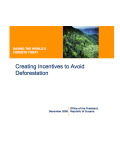
National development is of utter importance for countries like Guyana where social and economic needs take precedence over anything else. To reconcile the world's need for forests to kept be intact then Guyana should make deforestation a complementary objective to enhance national development. The paper Creating Incentives to Avoid Deforestation is focussed on how the UNFCCC process can create the incentives to make this complementarity possible.
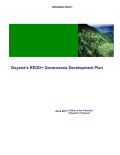
Produced in 2010 Guyana's REDD+ Governance Development Plan indicated key activities to be carried out, time-frame for implementation and lead agencies responsible for each of the indicated activities. The June 2011 version of the REDD+ Governance Development Plan provides updates from the previous version and it includes progress made on improving forest governance during 2009 and 2010.
On 11 January 2019 (1:15-2:00 PM CET), the Global Green Growth Institute (GGGI) is holding a workshop on Gender Equality, Social Inclusion, and the Shift to Green Growth – Making it happen at the PAGE Ministerial Conference 2019 - Advancing Inclusive and Sustainable Economies. The event panelists will share their visions and approaches to inclusive green growth. The event will also serve to premiere GGGI’s short film, Green Growth for Gender Equality: Promoting Poverty Reduction and Social Inclusion.
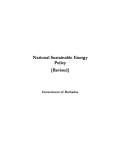
Issued to address the growing concerns about the predominance of imported fossil fuels in the country's energy sector, and increase the efficiency and sustainability of energy supply and demand the document National Sustainable Energy Policy was prepared as the part of the Sustainable Energy Framework of Barbados and is now being subjected to thorough review and update.
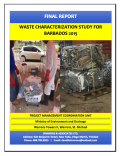
Undertaken over three rounds (April 2015, July 2015 and February 2015) the final report Waste Characterization Study for Barbados 2015 assesses the composition and quantity of the municipal solid waste (MSW) generated in Barbados and any changes which might have occurred in the respective periods.
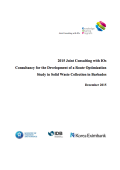
Resulted from the consulting project between Barbados Ministry of Environment and Drainage and Export-Import Bank of Korea (KEXIM) the report Consultancy for the Development of a Route Optimization Study in Solid Waste Collection in Barbados studies route optimization and determine the improvement points for the solid waste collection process and systems in Barbados.
On 17-18 January 2019, the World Bank and EMBARQ, the sustainable mobility initiative of WRI Ross Center for Sustainable Cities are holding Transforming Transportation 2019 on the theme of "Will New Mobility Deliver Sustainable Transport for All?" at the World Bank Headquarters in Washington, DC.
